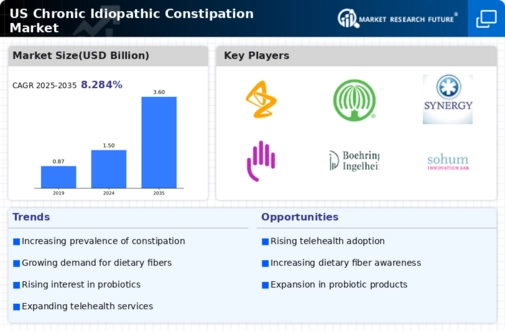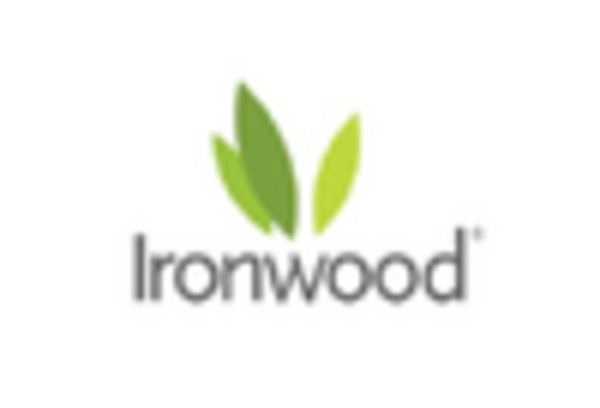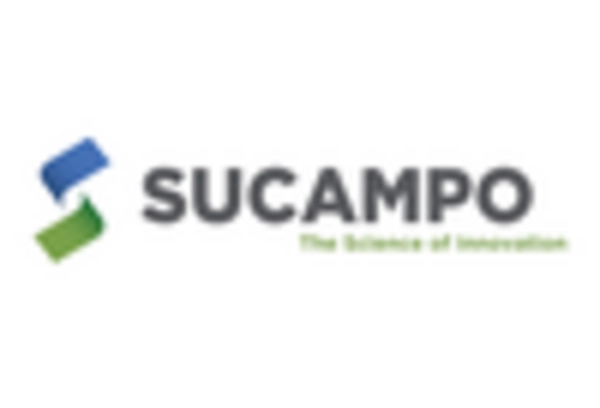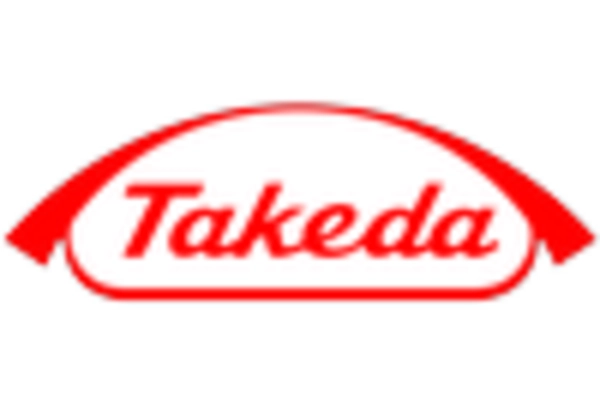Regulatory Support for New Treatments
Regulatory support for the approval of new treatments is a significant driver of the chronic idiopathic-constipation market. The US Food and Drug Administration (FDA) has streamlined the approval process for innovative therapies, which encourages pharmaceutical companies to invest in research and development. This regulatory environment is likely to facilitate the introduction of new medications that address unmet needs in the chronic idiopathic-constipation market. As a result, patients may gain access to more effective and safer treatment options. Additionally, the FDA's emphasis on patient-reported outcomes in clinical trials may lead to the development of therapies that are better aligned with patient preferences and experiences, further enhancing the market's growth potential.
Advancements in Pharmaceutical Research
Innovations in pharmaceutical research are playing a crucial role in shaping the chronic idiopathic-constipation market. The development of new drug formulations and delivery systems is enhancing treatment efficacy and patient compliance. For instance, recent advancements have led to the introduction of novel laxatives and prokinetic agents that target specific pathways involved in bowel regulation. The market is projected to witness a compound annual growth rate (CAGR) of approximately 5% over the next few years, driven by these advancements. Additionally, the focus on personalized medicine is likely to result in tailored therapies that address individual patient needs, further propelling the chronic idiopathic-constipation market. As pharmaceutical companies invest in research and development, the availability of innovative treatment options is expected to increase, thereby improving patient outcomes and satisfaction.
Rising Prevalence of Chronic Conditions
The chronic idiopathic-constipation market is experiencing growth due to the increasing prevalence of chronic conditions such as diabetes and irritable bowel syndrome (IBS). As these conditions often lead to gastrointestinal complications, including chronic constipation, the demand for effective treatment options is likely to rise. According to recent estimates, approximately 20% of the adult population in the US suffers from chronic constipation, with a significant portion attributed to underlying chronic diseases. This trend suggests that healthcare providers are increasingly focusing on managing these conditions, thereby driving the chronic idiopathic-constipation market. Furthermore, the aging population, which is more susceptible to chronic illnesses, is expected to contribute to the market's expansion, as older adults often experience constipation due to various factors, including medication side effects and decreased mobility.
Growing Awareness and Education Initiatives
The chronic idiopathic-constipation market is benefiting from increased awareness and education initiatives aimed at both healthcare professionals and patients. Campaigns designed to inform the public about the symptoms and treatment options for chronic constipation are likely to lead to earlier diagnosis and intervention. Healthcare providers are also being educated on the importance of recognizing and addressing this condition, which may have been previously overlooked. As awareness grows, more patients are likely to seek medical advice, thereby increasing the demand for treatments in the chronic idiopathic-constipation market. Furthermore, educational programs that emphasize lifestyle modifications, such as dietary changes and increased physical activity, are expected to complement pharmacological treatments, creating a more comprehensive approach to managing chronic constipation.
Increased Investment in Healthcare Infrastructure
Investment in healthcare infrastructure is emerging as a key driver of the chronic idiopathic-constipation market. As healthcare systems evolve to accommodate a growing patient population, there is a corresponding need for improved diagnostic and treatment facilities. Enhanced access to gastroenterology specialists and advanced diagnostic tools is likely to facilitate timely and accurate diagnosis of chronic constipation. This, in turn, may lead to increased treatment rates and better management of the condition. Furthermore, the expansion of telehealth services is expected to provide patients with greater access to healthcare providers, particularly in underserved areas. As healthcare infrastructure continues to improve, the The chronic idiopathic constipation market is poised for growth as more patients receive appropriate care and treatment.

















Leave a Comment